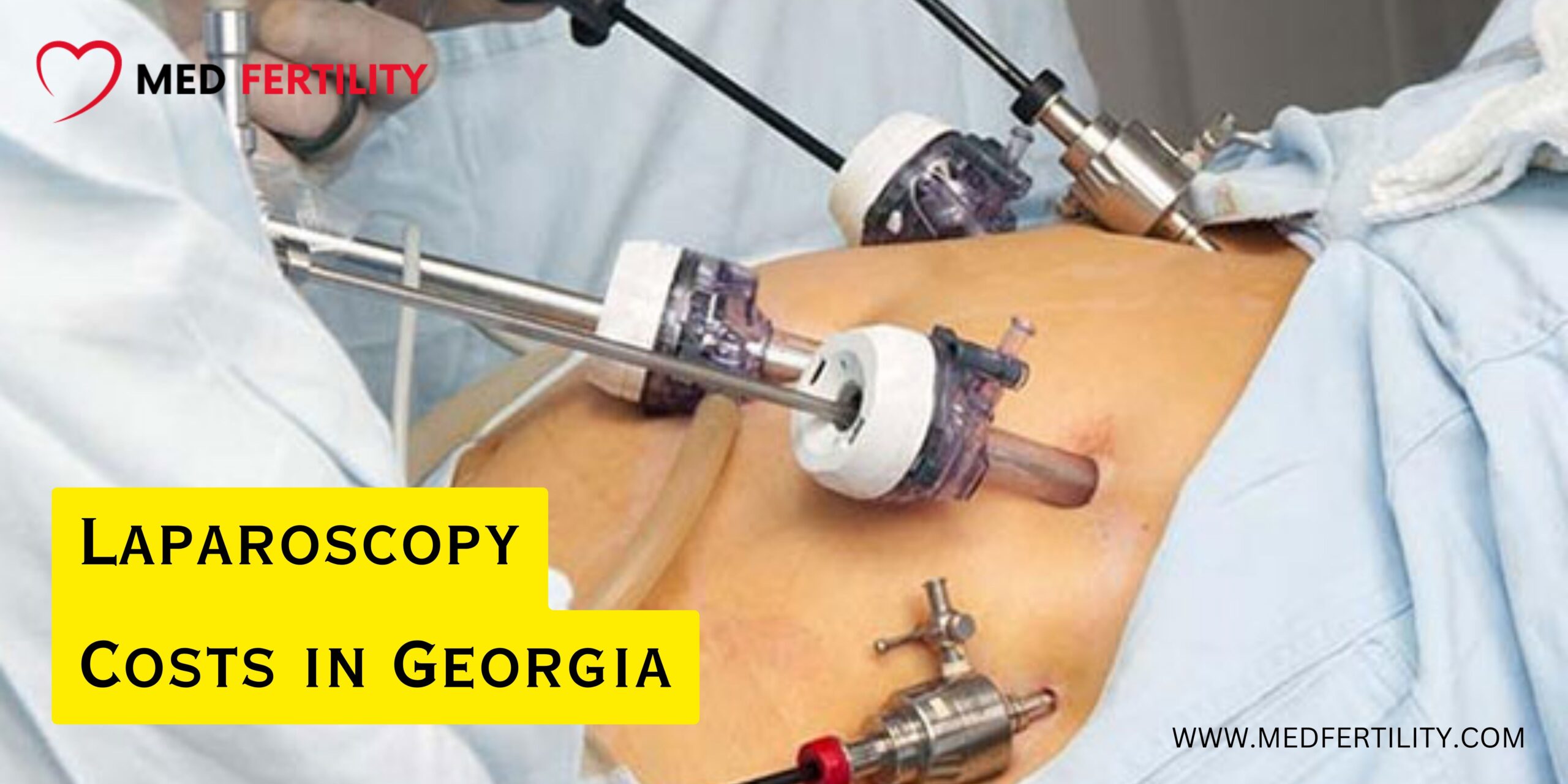When considering medical procedures like laparoscopy, understanding the associated costs is crucial. Laparoscopy Cost in Georgia can vary depending on factors such as the specific procedure, the complexity of the case, and the healthcare facility chosen.
Laparoscopy, a minimally invasive surgical technique, offers various diagnostic and therapeutic benefits for conditions ranging from gynecological issues to gastrointestinal disorders. It involves inserting a small camera and instruments through tiny incisions, minimizing pain, scarring, and recovery time compared to traditional surgery.
With its effectiveness and efficiency, laparoscopy has become a preferred choice for many patients and healthcare providers. Before undergoing laparoscopic surgery, individuals are encouraged to consult with healthcare professionals to understand the procedure, its potential benefits, and associated costs.
By obtaining comprehensive information, patients can make informed decisions about their healthcare options and pursue the most suitable treatment plan for their needs.
What is Laparoscopy?
Laparoscopy, also known as minimally invasive surgery, is a modern surgical technique that allows surgeons to perform procedures with small incisions in the abdomen. During laparoscopy, a thin, flexible tube with a camera (laparoscope) is inserted through a small cut, providing a clear view of the internal organs on a monitor. This approach enables surgeons to diagnose and treat various conditions such as appendicitis, gallbladder issues, endometriosis, and more, with less trauma to the body compared to traditional open surgery. Laparoscopy offers benefits such as reduced pain, shorter recovery time, and minimal scarring, making it a preferred choice for many patients and surgeons alike.
The Procedure of Laparoscopy Treatment
Laparoscopy treatment involves a series of precise steps:
- Preparation: The patient is prepped for surgery, which may include fasting and anesthesia administration.
- Incision: Small incisions, typically less than an inch in length, are made in the abdomen.
- Insertion of Laparoscope: A laparoscope, a thin tube with a camera and light source, is inserted through one of the incisions.
- Visualization: The laparoscope provides a clear view of the internal organs on a monitor, allowing the surgeon to navigate with precision.
- Surgical Instruments: Additional small incisions may be made to insert surgical instruments for performing the procedure.
- Procedure Execution: The surgeon performs the necessary surgical tasks, such as tissue removal, repair, or biopsy.
- Closure: Once the procedure is completed, the incisions are closed with stitches or surgical tape.
Importance of Laparoscopic Surgery
Improved Patient Outcomes: Laparoscopic surgery often results in less pain, reduced scarring, shorter hospital stays, and faster recovery times compared to open surgery.
Minimized Risk of Complications: With smaller incisions and less tissue manipulation, laparoscopic procedures typically carry lower risks of infection, bleeding, and other complications.
Enhanced Precision and Visualization: The laparoscope provides surgeons with a magnified, high-definition view of the surgical site, allowing for greater precision and accuracy during procedures.
Expanded Treatment Options: Many complex surgeries that were once performed exclusively through open techniques can now be safely and effectively performed laparoscopically, offering patients less invasive treatment options.
Cost-Effectiveness: Despite initial higher equipment costs, laparoscopic surgery can lead to overall cost savings due to shorter hospital stays, quicker recovery times, and reduced post-operative care requirements.
Advantages Over Traditional Surgery
Laparoscopy offers several advantages compared to traditional open surgery:
- Minimal Invasiveness: Laparoscopic procedures require smaller incisions, resulting in less trauma to surrounding tissues and reduced risk of complications such as infection and bleeding.
- Faster Recovery: Patients undergoing laparoscopy typically experience shorter hospital stays and quicker recovery times compared to those undergoing traditional surgery.
- Less Pain: The smaller incisions and reduced tissue trauma associated with laparoscopy often result in less post-operative pain and discomfort.
- Cosmetic Benefits: Laparoscopic incisions are small and often less noticeable than the larger incisions required for traditional surgery, leading to improved cosmetic outcomes.
- Lower Risk of Hernias: The smaller incisions used in laparoscopy may lower the risk of developing hernias compared to traditional surgery, where larger incisions are made.
- Better Visualization: The laparoscope provides magnified, high-definition images of the surgical site, allowing for improved visualization and precision during the procedure.
Understanding Laparoscopy Cost in Georgia
The cost of laparoscopy in Georgia can vary depending on several factors:
- Clinic or Hospital: The facility where you undergo laparoscopy can significantly impact the overall cost. Larger hospitals may have higher fees compared to smaller clinics.
- Surgeon’s Fee: The experience and expertise of the surgeon performing the laparoscopy can influence the cost. Highly skilled surgeons may charge higher fees for their services.
- Anesthesia: The type of anesthesia used during the procedure can affect the cost. General anesthesia, which ensures you’re completely unconscious during surgery, typically incurs higher fees compared to local or regional anesthesia.
- Diagnostic Tests: Additional diagnostic tests, such as pre-operative blood work or imaging studies, may be necessary before undergoing laparoscopy. These tests can add to the overall cost.
- Postoperative Care: Expenses related to postoperative care, including medications, follow-up appointments, and any necessary medical supplies, should also be considered.
Cost of Laparoscopy in Georgia
The Cost of laparoscopy in Georgia can vary depending on factors such as the clinic or hospital, surgeon’s fee, type of anesthesia, diagnostic tests, and postoperative care. Typically, the total expense ranges from $3,000 to $7,000. Larger hospitals may have higher fees compared to smaller clinics, and experienced surgeons may charge more for their services. Additional costs may include anesthesia fees, diagnostic tests, and postoperative care expenses. It’s essential to research and compare different facilities, inquire about financing options, check insurance coverage, and discuss costs openly with your healthcare provider to effectively manage laparoscopy expenses in Georgia.
Navigating Laparoscopy Costs
While the cost of laparoscopy in Georgia can seem daunting, there are several steps you can take to manage expenses effectively:
- Research and Compare: Take the time to research different clinics and hospitals offering laparoscopy in Georgia. Compare their prices, services, and reputation to find the best option for your needs and budget.
- Inquire About Financing Options: Many fertility clinics offer financing plans or payment options to help make treatment more affordable. Inquire about these options and choose one that works best for you.
- Check Insurance Coverage: Review your health insurance policy to determine if laparoscopy is covered and to what extent. Some insurance plans may cover a portion of the procedure costs, reducing your out-of-pocket expenses.
- Discuss Costs with Your Healthcare Provider: Don’t hesitate to discuss costs openly with your healthcare provider. They can provide transparency regarding fees and help you understand what’s included in the overall cost.
- Plan Ahead: If possible, plan ahead for your laparoscopy procedure. This allows you to budget for expenses, explore financing options, and make necessary arrangements to minimize financial stress.
Anesthesia Costs: What You Need to Know
Anesthesia Costs: What You Need to Know provides insights into the types of anesthesia, factors affecting costs, and its critical role in ensuring patient comfort and safety during laparoscopic surgery.
Types of Anesthesia Used in Laparoscopy
- General Anesthesia: Induces a state of unconsciousness, ensuring the patient feels no pain or discomfort during the procedure.
- Regional Anesthesia: Numbs specific regions of the body, often used in combination with sedation to keep the patient relaxed and pain-free.
- Local Anesthesia: Numbs a small area of the body, commonly used for minor procedures or as a supplement to other forms of anesthesia.
Factors Influencing Anesthesia Costs
Factors influencing anesthesia costs include the type and complexity of the laparoscopic surgery, the experience and expertise of the anesthesiologist, and any additional services provided by the anesthesia team. Additionally, the duration of the surgery and the specific anesthesia techniques required can impact costs. Hospital or surgical facility fees may also contribute to anesthesia costs, as some facilities include anesthesia expenses in their overall charges, while others bill separately. Finally, factors such as geographic location and market competition may influence the overall pricing structure for anesthesia services in a particular area.
Importance of Anesthesia in Laparoscopic Surgery
- Pain Management: Anesthesia ensures the patient remains comfortable throughout the procedure, minimizing pain and discomfort.
- Muscle Relaxation: Certain types of anesthesia induce muscle relaxation, facilitating surgical access and reducing the risk of complications.
- Patient Safety: Proper administration of anesthesia is crucial for maintaining patient safety and ensuring the success of the laparoscopic surgery.
Conclusion
In conclusion, understanding laparoscopy cost in Georgia is essential for patients seeking this minimally invasive surgical option. By delving into the various factors influencing costs, such as hospital fees, surgeon’s expertise, and anesthesia expenses, individuals can better prepare financially for their procedure. Moreover, exploring insurance coverage options, negotiating with healthcare providers, and seeking financial assistance programs can alleviate some of the financial burdens associated with laparoscopic surgery. Despite the costs involved, the benefits of laparoscopy, including reduced pain, shorter recovery times, and minimal scarring, make it a valuable choice for many patients. By empowering themselves with knowledge and exploring available resources, patients can navigate laparoscopy costs more confidently, ultimately enhancing their healthcare experience.












